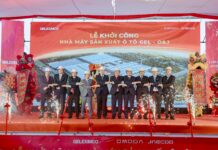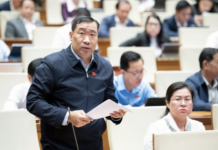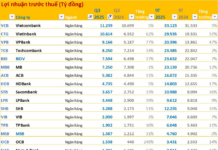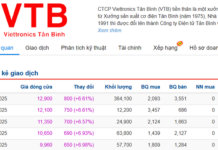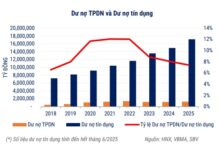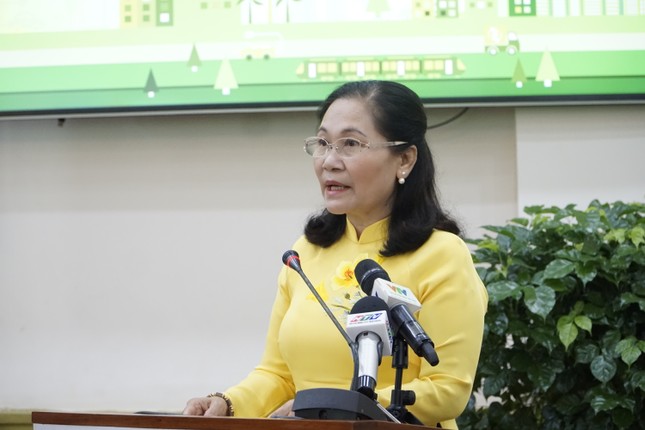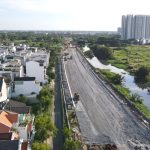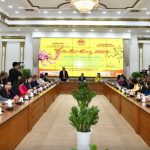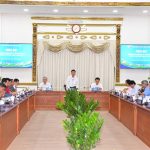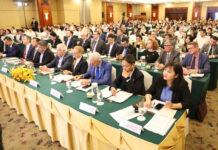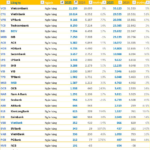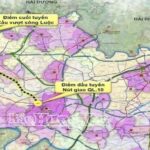At the workshop, Ms. Nguyen Thi Le, Chairwoman of the Ho Chi Minh City People’s Council, stated that according to statistics as of the end of 2023, Ho Chi Minh City has 10 million vehicles, including over 7.6 million motorcycles, 700,000 cars, and more than 2 million vehicles belonging to people from other provinces entering the city. The city emits approximately 35 million tons of carbon annually, with the industrial sector contributing 20 million tons and the transportation sector about 13 million tons.
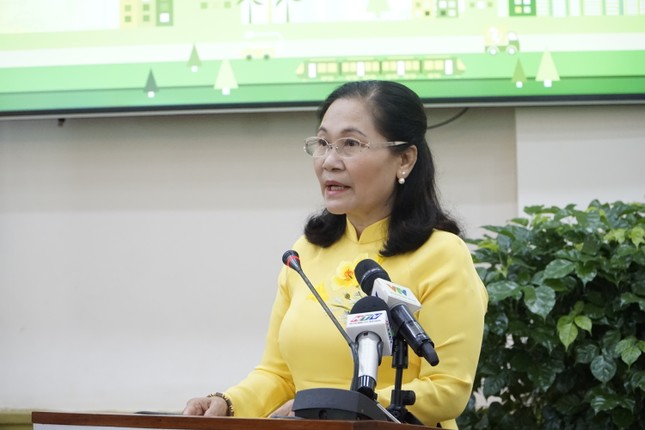
Chairwoman of the Ho Chi Minh City People’s Council delivers her speech. Photo: HH.
Professor Dr. Nguyen Ngoc Long, Rector of the University of Transport, shared that a recent study by the university revealed that 50% of carbon emissions in Vietnamese urban areas come from transportation activities. He emphasized, “To develop the economy and society, transportation needs to be one step ahead. To transform Ho Chi Minh City into a green city, the transportation sector must take the lead.”
In her presentation at the workshop, Dr. Phan Thuy Kieu, an expert from the Ho Chi Minh City Institute for Development Studies, noted that Ho Chi Minh City has a higher rate of motorcycle ownership compared to other cities in the region. As motorcycles are a major source of carbon emissions and environmental pollution, it is necessary to gradually transition to cleaner energy vehicles and implement plans to control the use of fossil fuel vehicles in specific areas to achieve the goal of developing a green transportation system that is sustainable.
“The implementation of supportive policies and incentives for transportation transition and emission control should be tailored to specific target groups and areas before being applied citywide,” said Dr. Kieu. She added, “Can Gio district attracts a large number of tourists, but it also has the highest poverty rate in Ho Chi Minh City. Therefore, we believe that implementing supportive policies, incentives, and encouragement for transportation transition in this area will contribute to both social welfare and sustainable development goals.”
Dr. Kieu proposed that Ho Chi Minh City provide financial support to Can Gio residents to switch from gasoline-powered motorcycles to electric motorcycles. Specifically, the city budget should cover the following: 100% discount on license plate fees; 50% discount on electric motorcycle exchange fees for poor and near-poor households; 100% interest rate subsidy package for installment purchases of electric motorcycles; and 100% compensation for the cost of old motorcycle buyback from regular households after the transition.
According to calculations, the total cost of transitioning from fossil fuel-powered vehicles to clean energy vehicles in Can Gio district is estimated to be over VND 970 billion (nearly VND 320 billion for the period up to 2025 and over VND 655 billion for the period from 2026 to 2030). Of this, the city budget would contribute more than VND 384 billion, and the remaining more than VND 590 billion would come from businesses and socialization.

Expert suggests the need to switch from gasoline-powered motorcycles to electric motorcycles. Photo: Ngo Binh.
Mr. Vo Khanh Hung, Deputy Director of the Ho Chi Minh City Department of Transport, acknowledged the large number of private vehicles in the city. However, he assured that the city’s policy would not involve forced reduction of private vehicles. Instead, the city will focus on developing a public passenger transport system to naturally decrease the reliance on private vehicles.
“We are implementing a project to develop public passenger transport and control private vehicles, including infrastructure and non-infrastructure solutions. For example, we are operating the Metro Line 1 and connecting bus system, gradually developing a green transport system, and reducing private vehicles,” said Mr. Hung. He added that the Ho Chi Minh City People’s Committee has assigned the Department of Transport to implement an emission control project, starting with a pilot in Can Gio district.
According to the representative of the Ho Chi Minh City Department of Transport, the plan is that from 2030 onwards, all public passenger transport in the city will use electric power. However, challenges related to interest rate support, loan limits for transport businesses, and investment in charging stations need to be addressed through appropriate mechanisms and policies…
Comprehensive regional connectivity
In addition to building strong physical infrastructure, Ho Chi Minh City needs to strengthen its soft connections with other provinces in the region in order to promote economic development. This includes prioritizing the training of skilled workforce and ensuring access to quality healthcare.
Emotional Kieu people when admiring Ho Chi Minh City from Metro Line 1
Ho Chi Minh City has undergone a remarkable transformation since the day I left. It now boasts a completely different appearance, exuding a fresh and vibrant energy. This sentiment was captured by Mr. Nguyen Duong Nam Phuong, a Vietnamese American, who was amazed by the city’s newfound liveliness.

